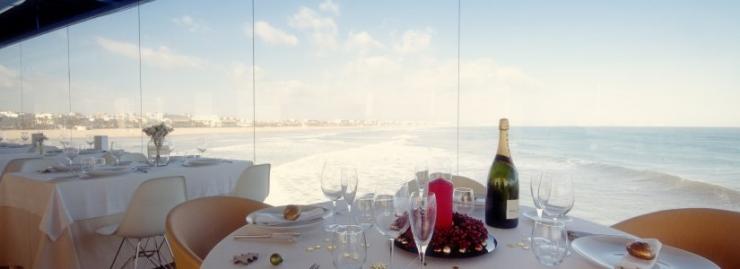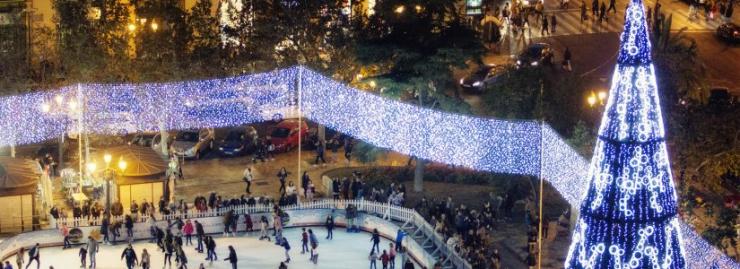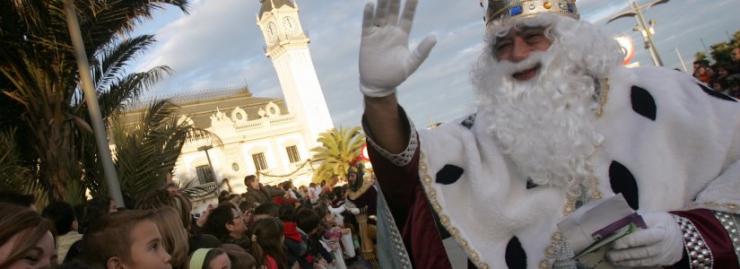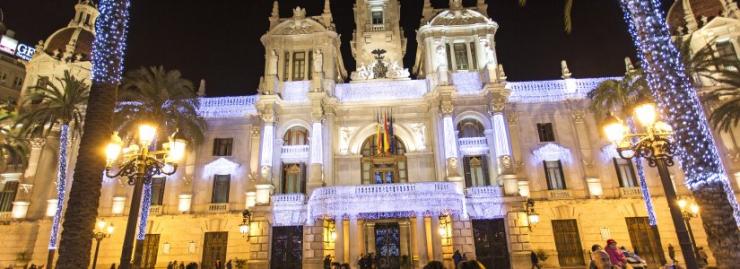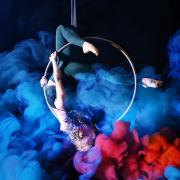Christmas in València
Over the Christmas season the city is filled with decorations and lights to fill the locals and tourists alike with festive cheer. The city has many Christmas traditions, some of the most important of which are described below.
TRADITIONS
NATIVITY SCENES - From 1 December to 6 January
One of the most important Christmas traditions is the Nativity Scene, which dates back to Saint Francis of Assisi, who placed a manger inside a cave with an image of the Baby Jesus and a live ox and mule beside the manger. It was with this scene as a backdrop that Christmas Eve mass of 1223 was celebrated. The idea was so successful that it extended to all Italy and King Charles III of Spain imported the tradition to his country in the 18th century.
This tradition is kept alive in people’s houses, where small nativity scenes are built, as well as in the city’s public spaces, with the monumental Nativity Scene built by the City Council in Plaza del Ayuntamiento for example. In addition, there are a number of Nativity Scenes in shopping centres, churches, the Cathedral and many of the city's museums, such as the Ceramics Museum.
CHRISTMAS EVE AND CHRISTMAS DAY - 24 and 25 December
On the evening of the 24th it is traditional for families to get together to enjoy a Christmas Eve dinner. On the 24th and 25th, people serve up typical dishes such as lamb, bream, Christmas stew, seafood, Spanish shortbread biscuits known as “polvorones”, marzipan and traditional Spanish nougat or “turrones”, all washed down with wine and the traditional glass of cava or sparkling cider, which is supposed to bring good luck.
Another tradition which takes place at midnight in all the city’s churches is the Midnight Mass or “Misa del Gallo” in Spanish, so called because the cockerel (“gallo”) was said to be the first creature to witness the birth of Christ and announce it to the world. The most important Midnight Mass is held in the Cathedral and features the Cathedral Choir, whose traditional carols and other Christmas songs make this a unique celebration.
The singing at the Christmas Day Mass is also performed by this illustrious Choir. Another Christmas Day tradition is for children to receive an “Estrena”, a small gift or sum or money, from their close family members.
HOLY INNOCENTS’ DAY - 28 December
Without a doubt one of the most enduring and popular traditions, especially among children, is Holy Innocents' Day, the Spanish equivalent of April Fools' Day – a day for jokes and laughs all around. The most traditional joke is to cut out a paper doll and stick it to the back of a friend or family member, who walks around with it unawares to general amusement. The media also gets into the spirit of things with joke news items.
NEW YEAR’S EVE - 31 December
One celebration we mustn’t forget is New Year’s Eve, when, after dinner, people throughout Valencia eat 12 lucky grapes to the sound of the bells. This is a moment of happiness, hope and good intentions for the year to come.
Afterwards, a lot of people go out for a night of partying and dancing known as “cotillion” in the city’s bars and discos.
THE THREE KINGS - 5 January
Once the New Year has started, there’s a very special day for children on 5 January when, at around 5 O’clock in the afternoon, their Majesties the Three Kings disembark in the Port of Valencia before parading through the city’s streets to Plaza del Ayuntamiento. There, they stand on the balcony of the City Hall and say a few words to the cheering crowd below. Afterwards, the City Hall opens its doors so that their Majesties, sat in the Salón de Cristal, can receive all those children who want to speak to them and receive a present.
This evening of high excitement culminates the next morning when children wake up to the presents they asked for in their letters. Some of these letters will have been handed personally to the Kings’ Viziers in the city’s shopping centres some days previously, and others dropped in the city's post boxes.
The holiday season ends with another culinary tradition on 6 January with the famous “Roscón de Reyes” cake, named after the Kings. This is a ring-shaped sponge decorated with candied fruit, a symbol of the rubies and emeralds that decorated the dazzling gowns of the Magi. The cake contains a small surprise, and the person who finds it is crowned King of the house. But there’s also a bean hidden inside the cake, and the person who gets the bean has to promise to buy next year’s cake.
CHRISTMAS DECORATIONS
You can also tell it's Christmas in Valencia thanks to the festive decorations that are put up across the city. The City Council decorates its gardens for the occasion with the traditional poinsettias, which catch the eye of every passer-by. The city’s shops enter into the spirit of things by putting up Christmas decorations, wrapping gifts, sponsoring the lighting that goes up in the streets and very often giving customers a share of a Christmas lottery ticket with their purchase.
But Christmas doesn’t just look good, it also smells good thanks to the many street stalls offering roasted chestnuts, “turrones”, almonds and much more.
SHOPPING
Although Christmas is an essentially family festival, it is becoming ever more commercial, tempting people out onto the city’s streets.
So much so that city fills up very year with Christmas markets. There’s the traditional outdoor market that goes up in the streets surrounding the Central Market building, and which is open every day offering typical Christmas products including everything from food (“turrones”, marzipan, chestnuts, sugared almonds, “polvorones”, etc.) to gifts, decorations, nativity figures, joke toys, etc. Meanwhile, the festive cheer is also felt in other emblematic places such as Colón market, which organises a number of events over the holiday season.
CHRISTMAS IS FOR KIDS
But if Christmas is really for anyone, it's for children, and many institutions take advantage of the school holidays to organise events aimed specifically at kids.
The biggest of these is Expojove, which will be held from 26 December to 4 January at Feria Valencia and involves all types of fun activities aimed at children. Now in its 26th year, the expo is expected to be a great success as in previous years.
Another important event is the traditional Christmas Fair which has been held every year for more than a century. Although it was originally a livestock fair, it slowly turned into a fair selling articles for children, painted nativity figures, toy drums, tambourines and maracas. Nowadays it includes a large funfair with something to suit everyone, as well as tombolas and stalls selling typical sweets. In addition to these two classic attractions, other activities include the Christmas competitions organised at the Nuevo Centro shopping centre with prizes for the winners, as well as a children’s fair in the centre’s outdoor plaza.
Another traditional feature of the festive season is the arrival of the most famous circuses, with Gran Circo Mundial, Gran Circo Wonderland, Circo Gran Fele and Gran Circo Americano returning year after year.
CHRISTMAS EVENTS
show
Lyrical Concert “O Holy Night” in Valencia
with children



